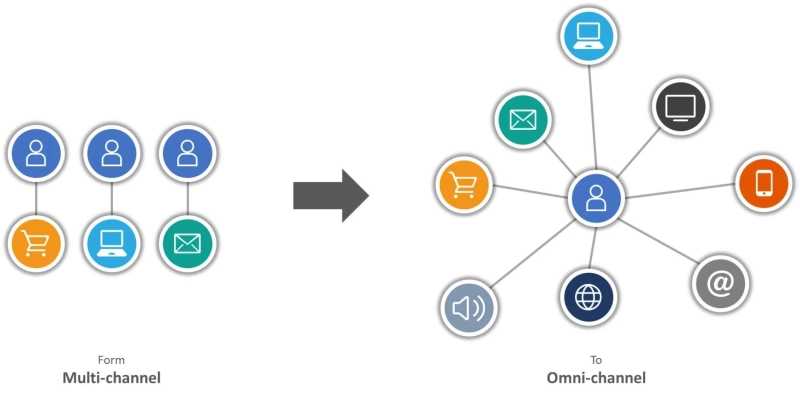In today's fast-paced digital world, the evolution of retail has taken a significant leap from traditional brick-and-mortar stores to an integrated online presence. This transformation necessitates a robust integration architecture that seamlessly merges various channels into a cohesive shopping experience for customers. This blog explores the journey from multi-channel to omni-channel commerce and the strategic approach of building integration architecture using tools like SAP ISA-M and API Business Accelerator Hub.
From Multi-channel to Omni-channel Commerce
Multi-channel commerce refers to the use of distinct, unconnected channels for customer engagement and sales, such as physical stores, online platforms, and mobile applications. However, with the advent of omni channel commerce solutions these disparate channels are integrated, providing a unified and consistent experience to customers. Omni-channel commerce is not just about being present on multiple platforms; it's about the seamless interconnection of these platforms to offer a cohesive customer journey.
Building Integrations in Phases
The transformation to omni-channel commerce is not a one-step process. It involves building integrations in phases, which allows for a more manageable, scalable, and less risky transition. The phased approach includes initial planning, defining the scope, developing integration solutions, testing, and iterative improvements. This method ensures that each phase builds upon the success of the previous one, leading to a more robust and efficient system.
Using SAP ISA-M and API Business Accelerator Hub
SAP Integration Solution Advisory Methodology (ISA-M) and API Business Accelerator Hub are pivotal in this phased integration process. SAP ISA-M offers a structured approach to plan and execute integration strategies effectively. It provides guidelines, best practices, and tools to design an integration landscape that aligns with business objectives. On the other hand, the API Business Accelerator Hub serves as a central repository for managing and deploying APIs, which are essential for connecting different systems and channels. The hub simplifies the process of API lifecycle management and ensures seamless integration across various channels.
Why Building in Phases?
Building an integration architecture in phases offers several advantages:
Risk Mitigation: It allows businesses to test and validate each phase before moving on to the next, reducing the risk of system failures and ensuring a stable integration process.
Cost-Effective: Phased implementation helps in managing resources and costs more effectively. Businesses can allocate budgets phase-wise, making it financially feasible.
Flexibility and Scalability: A phased approach provides the flexibility to adapt to changing business needs and customer preferences. It also allows for scaling up the integration process as the business grows.
Enhanced Customer Experience: By gradually integrating channels, businesses can ensure that each step contributes to an improved customer experience. This methodical approach leads to a more reliable and customer-centric omni-channel platform.
Continuous Improvement: Each phase provides an opportunity for feedback and improvement, ensuring that the integration architecture evolves to meet emerging trends and technologies.
Conclusion
The transition to omni-channel commerce through a phased integration approach using SAP ISA-M and API Business Accelerator Hub is a strategic move for businesses aiming to stay competitive in the digital era. This methodology not only ensures a seamless and integrated customer experience but also offers a structured and risk-averse path to achieving a robust omni-channel presence. As commerce continues to evolve, the significance of a well-planned integration architecture cannot be overstated. It is the backbone that supports and drives the omni-channel experience, ultimately leading to greater customer satisfaction and business success.


